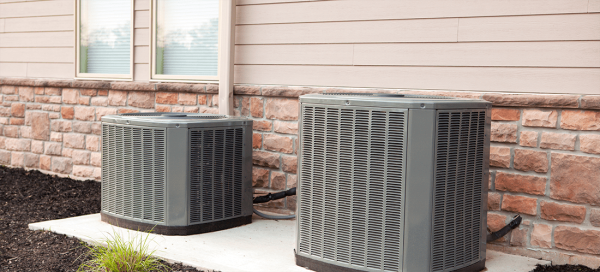Surge Protection for Texas Homes: Expert Insights on Why It’s Worth It
Here in the Lone Star State, we’re known for our unpredictable weather. From powerful storms and hurricanes to unexpected freezes, Texans know how suddenly the weather can shift. Unfortunately, these events can create electrical surges that damage or destroy expensive electronics and appliances. So if you’re on the fence about surge protection, here’s a deep dive into how it works, its costs, effectiveness, and whether it’s a smart choice for your Texas home.
What Surge Protection Is and How It Works
Surge protection safeguards your appliances and electronics from sudden spikes in electrical current. Downed power lines or transformer malfunctions can cause power surges that can damage your home’s wiring or short-circuit electronics, and surge protectors work by diverting excess electricity into a grounding wire instead of letting it flow into your devices.
Surge protection can either be installed as a whole-house system connected to your circuit breaker panel, as individual plug-in devices, or in the form of a home protection plan.
How Often Do Power Surges Occur, and How Likely Are They to Damage My Electronics?
While big surges during major storms get lots of attention, power surges often happen multiple times a month. Many go unnoticed because they may not immediately damage electronics. However, frequent low-level surges wear down circuits over time, shortening the lifespan of electronics like TVs, computers, and refrigerators.
How Much Does Surge Protection Typically Cost?
The cost of surge protection varies depending on the type and extent of protection.
Individual surge protectors cost around $20 to $100 each. On the other hand, the average cost of installing whole-house surge protection ranges from $200 to $700, plus an electrician’s installation fee (if you hire one). This may seem like a significant expense, but it can pay for itself after a single major surge event, which could cost you hundreds or thousands of dollars in appliance repairs or replacements.
Additionally, some home insurance providers offer premium discounts for homes with whole-house surge protection, which can further offset the cost.
Common Scenarios and Electronics That Benefit from Surge Protection
Power surges can occur due to external events like lightning strikes or downed power lines, as well as internal sources, such as cycling appliances (like air conditioners and refrigerators). The devices and appliances that benefit most from surge protection are typically those that are sensitive to power fluctuations and costly to repair or replace.
HVAC systems
Air conditioners and heating systems are essential to comfortable living in Texas, and can be expensive to repair.
Refrigerators and freezers
Power surges can cause compressors in these appliances to fail, potentially leading to costly repairs.
Televisions and home theater systems
Modern TVs and audio equipment are sensitive to surges and often use delicate circuitry.
Computers, routers, and modems
These devices are susceptible to hardware damage and data loss from power fluctuations.
Smart home devices
Modern smart home devices, like thermostats, security systems, and lighting controls are often more sensitive to surges than older devices. Surge protection is highly compatible with these devices, helping protect their delicate circuitry so you can keep your home connected. Whole-house surge protectors shield all outlets, including those with smart devices, while plug-in surge protectors can add an extra layer for particularly vulnerable electronics, like routers or smart hubs, which can otherwise disrupt an entire network if damaged by a surge.
Is Whole-House Surge Protection More Effective Than Using Individual Surge Protectors?
Whole-house surge protection covers your entire electrical system, safeguarding everything plugged into your outlets, even if they aren’t plugged into a separate surge protector. However, combining whole-house protection with plug-in surge protectors provides multiple layers of protection. For instance, sensitive electronics like computers can benefit from both a whole-house unit and an additional plug-in protector.

What Is a Surge Protection Plan?
Surge protection plans are generally available to homeowners or renters in single-family homes or apartments, covering your appliances even if you don’t have a whole home surge protector. Plans may vary based on your energy provider, so it’s worth exploring available options to see if your home qualifies for coverage.
Rhythm Energy’s Surge Protection Plans
Our Rhythm Surge Protection Plans give you peace of mind that your essentials are covered – just a few dollars a month brings a cost-effective solution without having to shell out for major upfront costs. For only $5.99 a month, you can get up to $2,000 for repairs to or replacements of qualifying prices; for $8.99, up to $5,000. Protection plans last for 12 months, there’s no deductible, and you can cancel at any time without any penalty.
Does Homeowners Insurance Cover Damage from Power Surges if I Don’t Have Surge Protection?
Homeowner’s insurance policies typically cover damage from lightning-induced surges but may not cover internally caused surges. Also, filing a claim for surge-related damage could impact your premiums.
Some insurance providers offer discounts for homes with whole-house surge protection installed, as it reduces the likelihood of claims. While this isn’t universal, it’s worth checking with your provider, as a small premium reduction may offset the cost of installing surge protection, over time.
Misconceptions About Whether Surge Protection is Necessary
Despite the benefits, some misconceptions still surround surge protection.
Myth: I only need surge protection during storms. Reality: Surges can occur at any time, often due to internal causes, making surge protection beneficial year-round.
Myth: Surge protectors wear out quickly. Reality: High-quality surge protectors last for several years, with many manufacturers offering warranties and replacements.
Myth: All surge protectors are the same. Reality: Whole-house surge protectors provide more comprehensive protection than standard plug-in surge strips.
Who Does Not Need Surge Protection?
If you live in a home without sensitive electronics or costly appliances, surge protection may not be as important. Some apartments or new homes also come equipped with built-in surge protection. However, these cases are rare, and for most households, surge protection provides peace of mind.
Real-Life Example: Homes With and Without Surge Protection
Take the example of two homes in Houston during a severe thunderstorm, both of which experienced a significant power surge. The home with whole-house surge protection saw no damage, while the home without protection had to replace several appliances, totaling over $2,000 in repairs. This scenario illustrates the value of surge protection, as it often pays for itself after just one significant surge event.
At Rhythm Energy, We’ve Got You Covered
If you’re looking for surge protection but don’t want to pay the upfront costs of installing your own whole house surge protector, then a surge protection plan from Rhythm Energy may be right for you – bringing you peace of mind for just a few dollars a month. Visit gotrhythm.com/surge to learn more.
Frequently Asked Questions
How Common Are Power Surges in Texas?
Power surges can happen a lot in Texas, particularly during hurricane season, thunderstorms, and in high-wind areas. Texas ranks high in the nation for lightning strikes, which are a major cause of power surges, making surge protection particularly useful in our state.
How does surge protection work?
Surge protection diverts excess current from power surges away from your appliances, protecting them from damage.
How much does surge protection cost?
Costs range from $5 per month for a protection plan, to $20-$100 per plug-in protector, and $200-$700 for a whole-house system.
Will my homeowner’s insurance cover surge damage if I don’t have surge protection?
Home insurance may cover lightning-related surge damage but often excludes other surge causes. Check with your insurer for details.
Is there a warranty on surge protection devices?
Many devices include warranties that cover repair or replacement of protected devices if the protector fails.
Can surge protection prevent damage from lightning strikes?
While surge protection can protect against smaller surges and even larger spikes, it cannot completely shield a home from a direct lightning strike, because lightning generates far more energy than typical surge protection can handle. However, surge protection can help absorb some of the energy from nearby lightning strikes or strikes on the grid, reducing the risk of damage. For areas with high lightning activity, homeowners may also consider additional grounding systems as an extra layer of protection.
Are there any risks or downsides to installing surge protection in my home?
Surge protection is generally safe and poses no inherent risk to your home’s electrical system. However, there are a few considerations to keep in mind:
Cost: Initial installation can be expensive, particularly for whole-house systems.
Replacement needs: Over time, surge protectors wear out and need to be replaced. Many people don’t realize that a surge protector may no longer work effectively after a significant surge.
False sense of security: Whole-house surge protection doesn’t cover every scenario, such as direct lightning strikes. Using it alongside individual surge protectors for sensitive devices is recommended.
What are the differences between basic power strips and advanced surge protectors?
Basic power strips are often just multi-outlet extenders that provide no protection against surges. They distribute power to multiple devices but don’t regulate or absorb excess voltage.
However, advanced surge protectors actively absorb or divert excess voltage to protect your devices. They include components like metal oxide varistors (MOVs) or gas discharge tubes to handle the excess energy and prevent it from reaching your electronics. Some even come with additional features like automatic shutdown, which cuts power to connected devices when protection is compromised, and diagnostic lights to signal when the protection component is still active. For long-term protection, an advanced surge protector is much more effective than a standard power strip.




